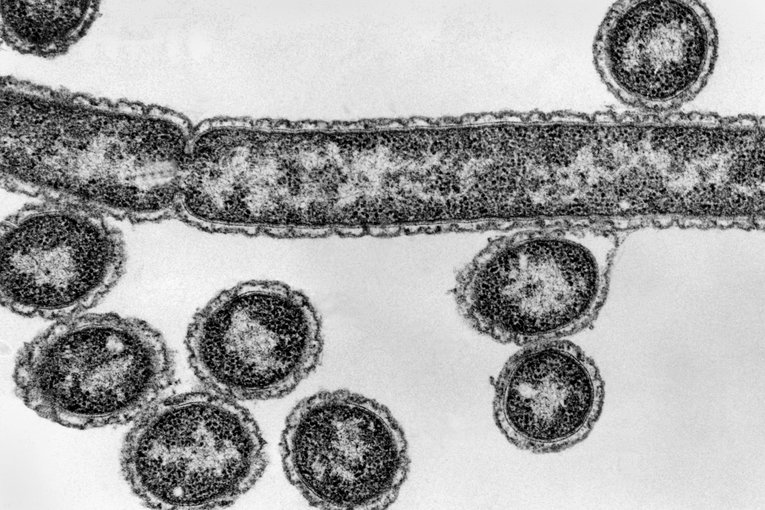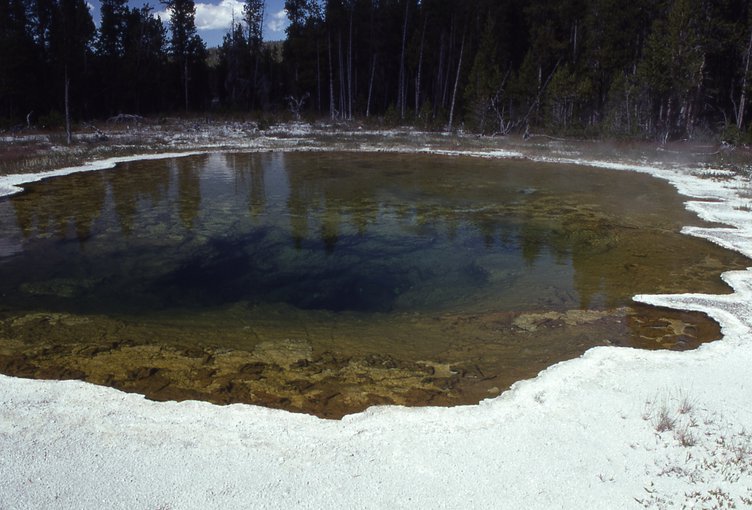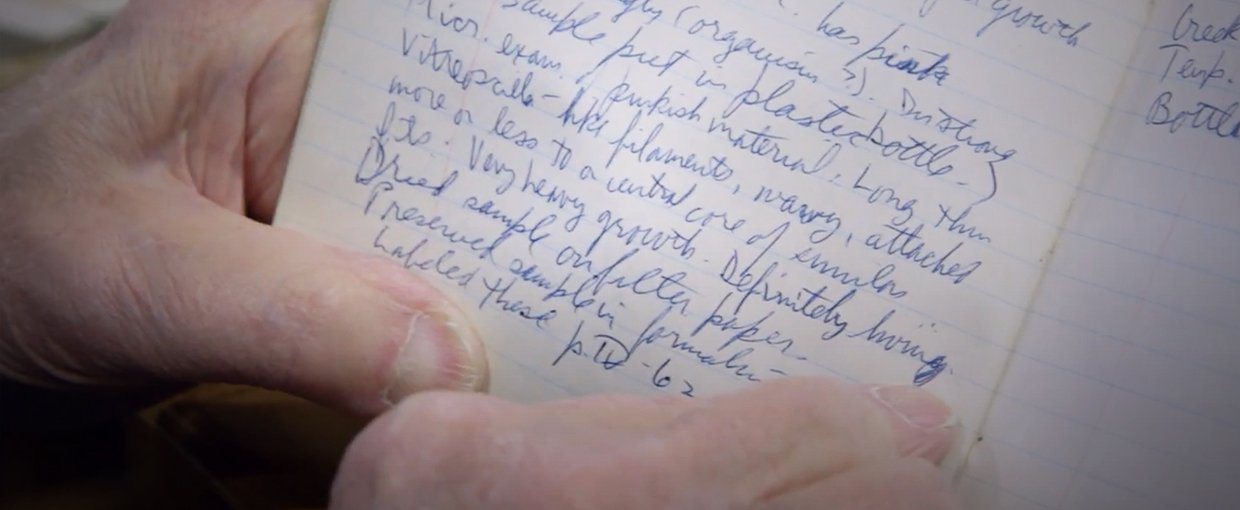
April 2021 marked the 52nd anniversary of a seminal publication in the study of life in extreme environments on Earth. Sadly, this month also marked the passing of the paper’s lead author, Dr. Thomas Brock, at the age of 94.
On June 20, 1964, a team of researchers led by Dr. Thomas Brock, then a professor at the University of Indiana, collected a sample of boiling water from hot springs in Yellowstone National Park. This sample would have profound implications for the field of astrobiology, as well as disciplines like genetics, molecular biology, and medicine.

Thomas Brock joined the faculty at the University of Wisconsin-Madison in 1971. In 1979, he became chairman of the UW Department of Bacteriology.Image credit: University of Wisconsin–Madison.
Brock had become curious about the types of organisms that inhabited the Yellowstone springs a few years earlier on his first trip to the national park. After receiving funding from the National Science Foundation (NSF), he returned with a team of scientists to characterize life in the boiling waters. Brock and his team, including undergraduate student Hudson Freeze (now a Director and Professor at the Sanford Children’s Health Research Center), would go on to identify thermophilic (e.g. heat loving) microorganisms in Yellowstone that could survive in temperatures higher than any other microbes known at the time.
Brock and Freeze lowered microscope slides into the hot springs. After a few days, the slides were removed from the water and examined in the laboratory. Microorganisms could be seen on every slide. Brock’s work was an early example of research on life in extreme environments, a field of study that has now become a cornerstone of astrobiology science.

Image of Thermus aquaticus under a microscope.Image credit: University of Wisconsin–Madison.
Brock and Freeze isolated and cultured organisms from the 1964 sample. In 1969, they published a seminal paper describing the thermophilic bacterium, Thermus aquaticus (1). T. aquaticus thrived in the boiling waters of Yellowstone, and the mechanisms it used to survive became the focus of scientific inquiry.
T. aquaticus expanded ideas of habitability to include environments that had traditionally been considered uninhabitable. Studying the mechanisms that life uses to survive at the edges of habitability can help astrobiologists understand how life as we know it might be able to live on other worlds in the Solar System and beyond. Today, astrobiologists still travel to Yellowstone to gather samples and observe microbes that can thrive at temperatures that were once considered too hot for life to handle.

Thomas Brock reads the journal entry from the day he and his team collected samples containing the thermophilic bacterium, Thermus aquaticus. The text reads: “Note: Effluent at 82 degrees C has pink gelatinous stringy (organism?). In strong flow. Sample put in plastic bottle. Micr. [microscopic] exam of pinkish material. Long thin vitreoscilla-like filaments, wavy, attached more or less to a central core of similar fts [filaments]. Very heavy growth. Definitely living. Dried sample on filter paper. Preserved sample in formalin.“Image credit: Craig Wild/UW–Madison.
But that isn’t where the influence of Brock’s samples ends. Brock and Freeze deposited T. aquaticus into the American Type Culture Collection, a repository for reference microorganisms, cell lines, and other research materials. Decades later, in the 1980s, biochemist Kary B. Mullis would use these same cultures of T. aquaticus to create a laboratory technique known as the polymerase chain reaction, or PCR. This feat would earn Mullis a share of the 1993 Nobel Prize in Chemistry.
To survive extreme heat that can kill other living cells, T. aquaticus contains enzymes that are stable at high temperatures. One of these enzymes is a polymerase, which is a molecule used in replicating DNA. A specific polymerase, dubbed Taq Polymerase, was isolated from T. aquaticus and then used in PCR technology.

Yellowstone's Mushroom Pool Hot Springs, Midway & Lower Geyser Basin, as photographed in October of 1993.Image credit: Jim Peaco / National Park Service (nps.gov).
PCR is a technique that replicates DNA in the lab through cycles of extreme heating and cooling, and the heat stability of Taq polymerase makes it essential for this process. PCR can be used to make billions of copies of a strand of DNA in a short period of time and is now a fundamental technology used in technology used in genetic studies, and is crucial to many areas of research in astrobiology.
References:
Brock, TD. “Life at High Temperatures,” Science. 158(24), 1012-1019. November 1967. DOI: 10.1126/science.158.3804.1012
Brock and Freeze. “Thermus aquaticus gen. n. and sp. n., a Nonsporulating Extreme Thermophile,” Journal of Bacteriology. 98(1), 289-97. April 1969. DOI: 10.1128/JB.98.1.289-297.1969
Additional Resources:
Thomas Brock, Whose Discovery Paved the Way for PCR Tests, Dies at 94 (NY Times)
Tom Brock, who discovered world-changing extremophiles, dies at 94 (University of Wisconsin-Madison
Rediscovering Yellowstone – Tom Brock (University of Wisconsin-Madison)
Discovering Life in Yellowstone Where Nobody Thought it Could Exist (National Park Service)
Further Resources:
A Novel Acidophile Found in Yellowstone
Sources of Hydrogen in Yellowstone Hot Springs
Geomicrobiology of Yellowstone Lake

